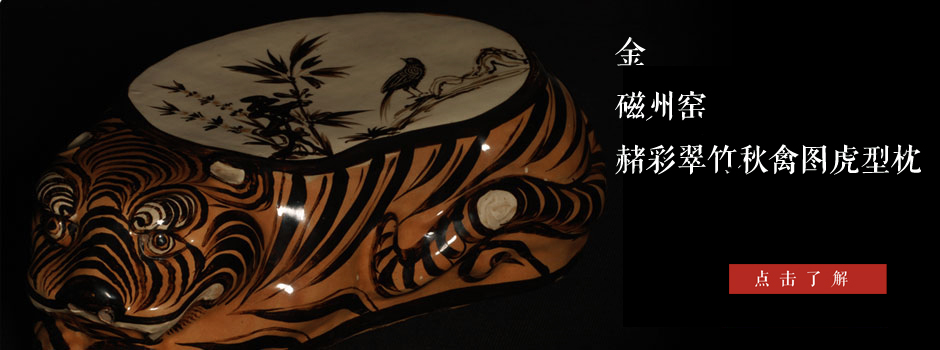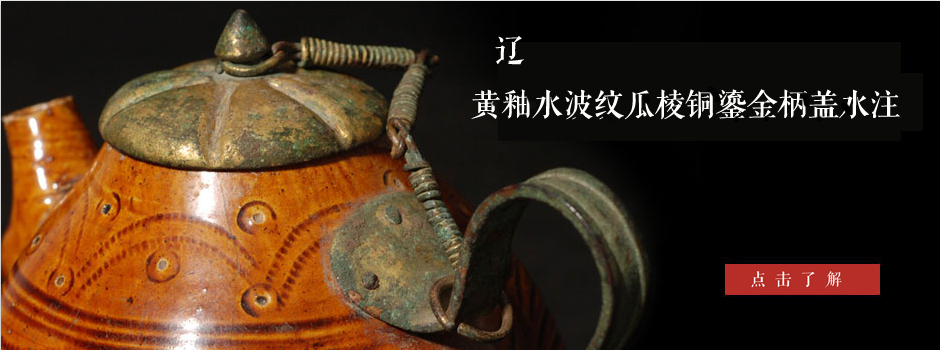- >> Company Profile
- >> President's Speech
- >> Brand Service
- >> Mission & Goals
- >> Value System
- >> Brand Construction
- >> Philosophy and Mode
Address: Room 614-616,China World Office 1, No.1 Jian Guo Men Wai Avenue, Beijing, P.R.C.
Tel:+86-10-65051177
Fax:+86-10-65058988
E-mail:soongs@soongsart.com
Home >> Show Items
Bluish-white Porcelain Bowl with incised flower and baby playing in the Southern Dynasty
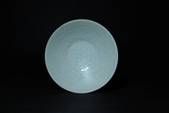 |
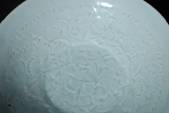 |
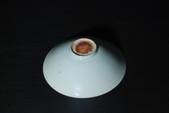 |
Jingdezhen Kiln was famous for bluish-white porcelain in Song and Yuan Dynasty. The porcelain, which has the unique feature of glazed color, is called “bluish-white porcelain”, for its colour is between green and white. Namely, the white color reflects green color while the green color shines the white color. In addition, the molding bed of the porcelain is rather thin. Thus, the incised decorative pattern, both inside and outside, can be seen when it faces the sunlight. In this way, the porcelain is also called “Green Shadow”. There are many records about the porcelain in the literatures and historical materials in Song and Yuan Dynasty. For example, “Introduction of the Capital City” written by Nai Deweng recorded that there were “bluish-white bowl shop” along the Pingjin Bridge at that time and in “A Brief Record of the Island”, the author Wang Dayuan wrote about the situation that the bluish-white porcelain was produced for foreign trade. The words “Green Shadow” was firstly seen in the late Qing Dynasty. Xu Zhiheng said “The celadon is extremely thin. The green shallow left by engraved flower pattern is called green shadow” in his “Discussion of Porcelain at Yinliu Room ”.
The bowl is light and delicate and its molding bed is strong and thin. The slight difference from the top is very important to the beauty of overall model, which looks pleasant. When watching the bowl, people will speak highly of the skillful craftsmen. The light green color shines in the white glaze. At the thick place, the light green turns into dark green. The bowl is smooth and transparent, which is like the jade when touching. In the bowl, the patterns of baby playing in the flowers are incised. The large peony is blooming and the babies with round faces and plump bodies play in the flowers, which make people feel the happiness of childhood. The craftsmen had skillful incised techniques. For example, the peony petals and leaves were engraved by comb-type tools. Then a few random radians on them with sharp tools are incised, which will result in the beauty of the flowers. The simple design is the charm of Green Shadow for Song Dynasty. As the important part of the patterns, the two babies’ figure is vividly, which reflects the high technique that is hard to achieve nowadays.
The bowl is the qualified product of bluish-white porcelain in Song Dynasty. Its shape and engraved style is similar to the bluish-white porcelain with incised pictures that is excavated from the tomb of Sun Dalang and his wife in Daguan Year 3(1109) of the late Northern Song Dynasty, which serves as the basis for the dynasty of the bowl. Thus, the production time of this bowl may be in the late Northern Song Dynasty. The subject matter of baby playing in the flowers is not unique in Hutian Kiln. The specimen unearthed from the Xianghu Kiln and Liujiangwan Kiln shares the similar type and quality with the ones in Hutian Kiln. Nowadays, when seeing the bluish-white porcelain, people will think that it is produced by Hutian Kiln, which is not true. At least, many kilns of Song Dynasty produced bluish-white porcelains in Jingdezhen. Most of the porcelains can be compared to the ones in Hutian Kiln. In the Southern Song Dynasty , people thought that the quality of bluish-white porcelains produced in the kiln that exist in present Jingdezhen was better than the ones produced in Hutian Kiln. The kiln in Jingdezhen is known as “Town Kiln” in the “Porcelain Record” written by Jiang Qi.
This bowl was produced in the age that the Chinese style of writing reached its highest point. Thus, the bowl reflected the unique culture at that time. In the Zhaosong period, the development of porcelain always indicated the progress of cultural development. The flourish and development of Jingdezhen was closely related to the development of porcelain industries. During the Jingde (from the year 1004 to 1007) of Song Dynasty, Emperor Zhenzong Zhao Heng ordered the Jingdezhen to produce porcelains for the court and the town was awarded the reign title, which made the town rank the first in the porcelain industry in the south of the Yangtze River. The bluish-white porcelain is “green as the sky, white as the jade, thin as the paper and sounding as drum”. The white color shines the color of green and vice versa. The bluish-white porcelain in Hutian Kiln and Xianghu Kiln formed its own system, which represents the high-standard technique in Song Dynasty. Green shadow reflects the culture of Song and it is a special and interesting term to indicate the porcelain.
The qualified bluish-white porcelain is called “Beautiful Jade”. It is thin and hyaline compared to the celadon and white ware. Its molding bed is thin and it is made up of bluish-white glaze. The surface is decorated with incised patterns and printing patterns and patterns engraved by “comb”, which look good in the sunlight. Thus, it is named “Green shadow” and famous here and there. The porcelain looks like the jade, which indicates the reticent morality of Chinese people.
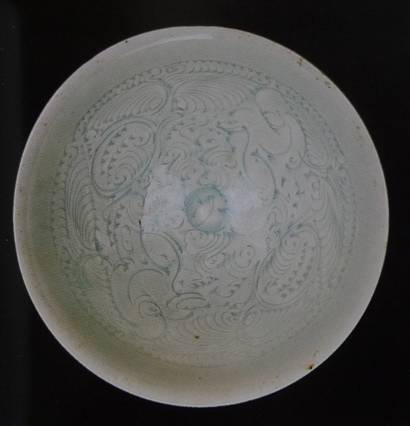
(Picture) Bluish-white Porcelain Bowl with incised flower of baby playing in Southern Dynasty
Collected by Asian Art Museum of San Francisco in the United States
Caliber: 19.9 cm
